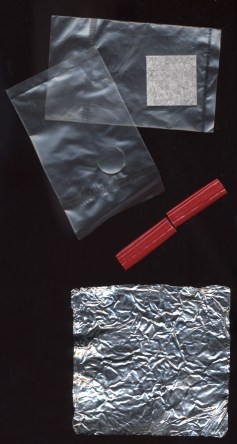 This unit includes:
This unit includes:
Unlike most Things of Science units, many of the experiments require materials not included in the unit. These include balloons, thread, Saran wrap, fur or wool, a mason jar, heavy copper wire, solder, a penny, a cork or wood block, thin metal foil (suggested source: chewing gum wrappers) or gold leaf, black and white photo film, a darkroom or other room illuminated by red light only, a paper clip, sticky tape, scissors, a small light-tight box, a piece of black velvet or other black cloth, glue, a short length of felt weather strip, a coffee can half filled with cotton, a powerful flashlight, crushed dry ice, rubbing alcohol, a discarded clock or watch with a radium-painted dial, cardboard to make a telescoping box, dull black paint or India ink, zinc sulfide, and parts to build a Geiger counter. A long list -- but the experiments are quite ambitious and most are well worth the effort if you can obtain the necessary materials.
The electroscope and cloud chamber projects are particularly interesting. The spinthariscope (a device for viewing radioactive decay directly) is not practical as described (radium watches haven't been made for years, for good reason), but a Google search on "spinthariscope" will turn up information about similar projects that can be made with currently available materials; a good place to begin is Theodore Gray's Americium article (part of his remarkable Periodic Table Table). The Geiger counter is an interesting project, but would be difficult to construct as described because vacuum tubes have not been manufactured for many years. A Google search for "Geiger counter kits" will locate designs that can be built with modern components; the Geiger tube itself is likely to be the most expensive component by far, but old Geiger tubes can sometimes be found in surplus sales for relatively reasonable prices.